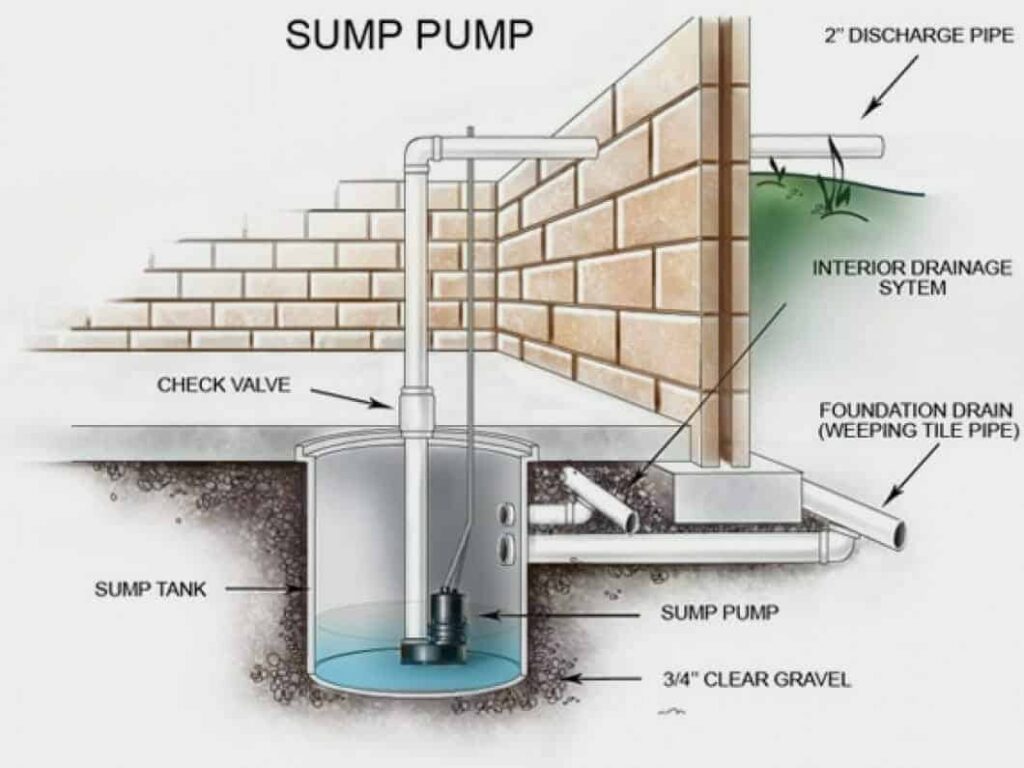There are several major parts of sump pump, including a groundwater collection system, a sump tank, a pump, a check valve, and an outlet drain. It is a nightmare situation for homeowners to come home to a flooded basement. Sump pumps prevent water from entering your basement.
For all the information you need about sump pumps, the Linquip website is the best place to start. Our group of experts is available to answer any of your questions regarding sump pumps, so please do not hesitate to ask. It is a good idea to read Linquip’s article titled “Pump: Working Principles, Function & Diagram”, which may serve as a starting point for gaining a better understanding of industrial pumps.
What is your experience with sump pumps? Have you worked with any in the past? At Linquip, you will find a comprehensive selection of Special Purpose Pumps Products on which you will be able to find exactly what you are looking for. Are you currently looking for a sump pump? Linquip looks forward to providing its customers with free access to all the Special Purpose Pumps for Sale available on the website. The Linquip website also provides you with the opportunity to request a free quote or inquiry regarding the price of pool pumps from all Special Purpose Pumps Suppliers and Companies.
The following is a basic explanation of sump pumps, their components, and how they work.
Basics of Sump Pump
Did you ever get surprised by the amount of rainfall in spring? Too much rain can lead to more water damage if you are not prepared. Avoid letting heavy rain ruin your basement, your spring getaway, and cost you thousands of dollars in repairs. The sump pump takes out water from the basement of a house.
Sumps are natural pits typically created below the main surface of the basement floor. This pit holds the sump pump, which is also called the basin.
The water level is sensed by valves on the pump. As soon as the basement water level reaches a certain level, the sump pump will automatically pump it out. Following this, the water is discharged from the property via a discharge line.

Types of Sump Pumps
Sump pumps come in several types that you should consider before purchasing one. You should choose a pump that has enough power to handle any flooding you may experience. You have several options to choose from:
Submersible Sump Pumps
Submersible sump pumps incorporate both a motor and a pump. In your basement, they are submerged and enclosed in a basin. In addition to being quieter and less likely to clog, they also save space. The drawback of these sump pumps is that they may not last as long as other types. However, submersibles are still your best choice if flooding is a major concern.
Pedestal Sump Pump
Pedestal sump pumps have a separate motor and pump. There is a motor mounted on a pedestal above the basin, along with a hose connected to the basin containing the pump. Water is sent to the drain area by the pump through the hose. The motor can be easily accessed for maintenance and has a longer lifespan since it is not submerged. Additionally, it can be loud and take up a lot of room in your basement.
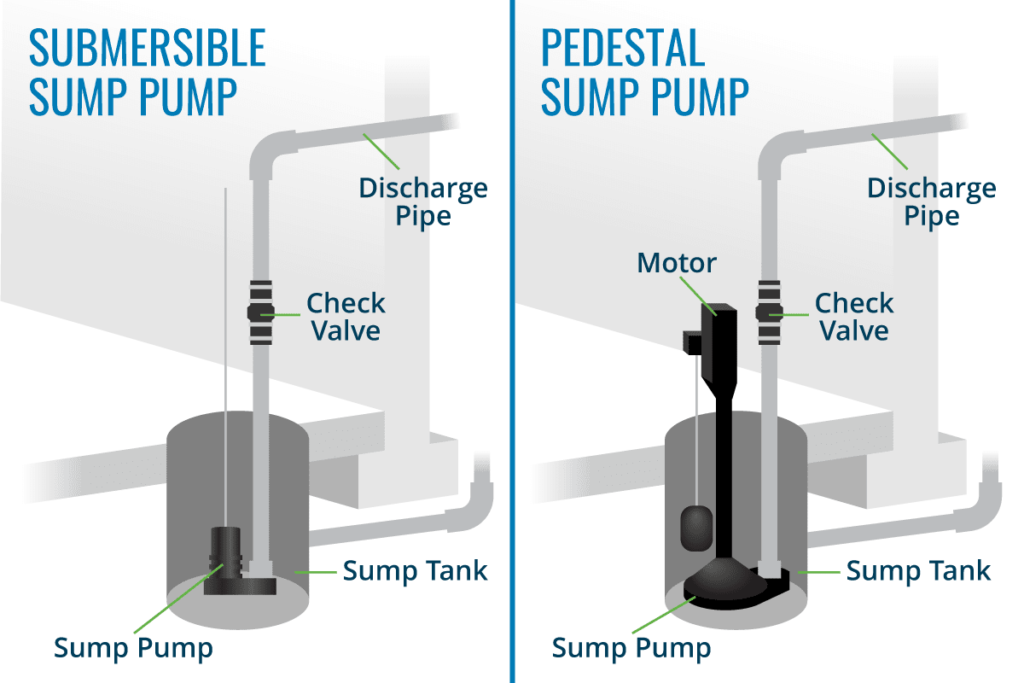
Battery-Operated Backup
Using a battery-powered backup can provide some extra protection from flood damage. Even when the power goes out, they can still operate – an important feature during storms.
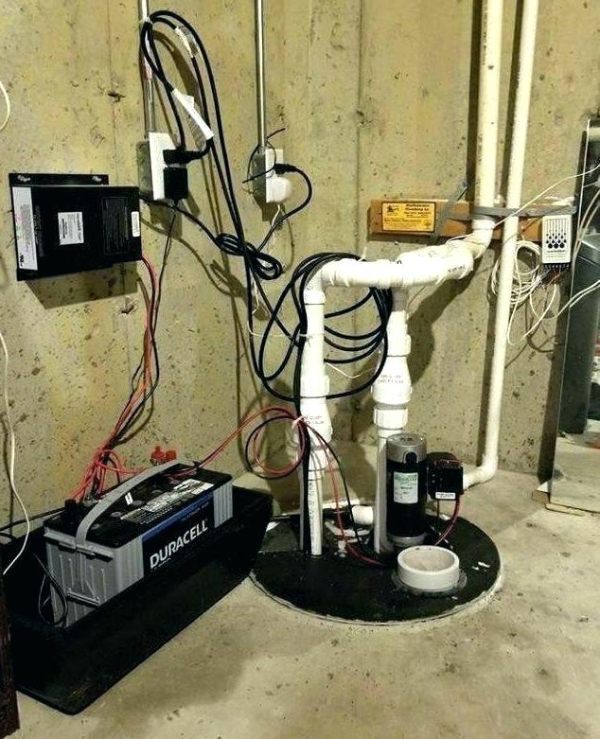
Water-Powered Backup
You can increase water pressure with a water-powered backup so that you can clear the water in your basin. It requires no monitoring or replacing of batteries since it runs on water. The water bill can go up, and some cities outlaw them, so check your city’s building codes.
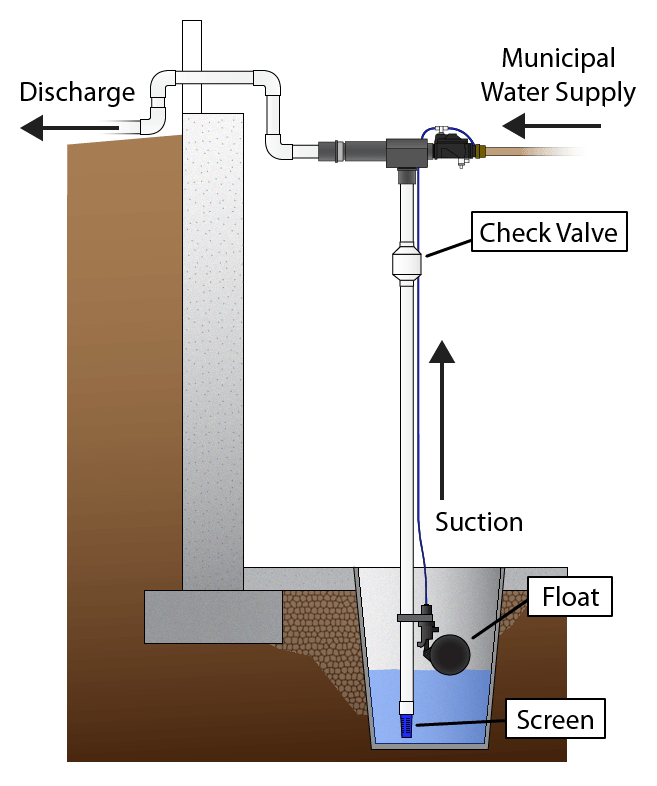
Components of Sump Pump
Ideally, you should have a sump pump system in place to protect your home from water damage. Aside from the above components, the system includes several other parts. Continuing reading will help you determine whether you possess – or require – all these parts.
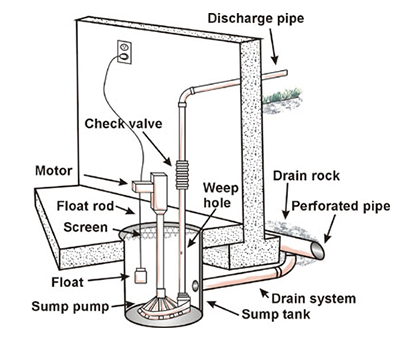
Ground Water
Along the foundations (and, in some cases, under the floor), drain rocks and drain tiles collect ground water. Water travels by drain tile to a sump tank (in a large house, two tanks) buried in the basement floor.
Sump Liner
An open sump pit can be unsightly and hazardous, and it is prone to clogging with debris. The use of an airtight-fitting lid on a durable plastic sump liner will help with this. The lid has a one-way drainage system to enable standing water to drain into the liner.
Sump Pump Alarm
The lid of the liner is equipped with a battery-powered alarm. A warning will sound if the water level in the liner exceeds the top of the pump.
Sump Pump Pit
If your sump pump pit is designed properly, it can collect all the water that accumulates around your home and finds its way into your basement. Your first step should be to install downspouts and drain pipes that run away from your foundation so that rainwater does not accumulate.
However, some water will leak into your basement during heavy rains, especially if there is a high water table in your area. The area below an underground surface where the soil or rocks are permanently saturated with water is called the water table. As a layman might say, there is always a pool of water below the surface of the soil, and the water table is considered to be the top of this pool of water. Water table elevation fluctuates with rain and periods of dryness, but it remains relatively stable for your geographical region.
Sump pits, also known as crocks, basins, or sump tanks, can be made from clay, tile, steel, concrete, fiberglass, or polyethylene. A standard tank has a diameter of 18 inches and a depth of 2 to 3 feet although they vary in size.
Sump tanks are typically located at the lowest point of the basement. All tanks have a sturdy cover and a hole on each side for incoming drainage tile. Some sump pump manufacturers offer sump pits made of polypropylene or fiberglass that are custom-fitted to their pumps.
Remember that if water is going to get into your basement, it should collect in the sump pit and not in your carpet, furniture, or whatever else is down there. Your sump pit should be free of debris and clean.
In addition, it’s important to keep in mind that most homeowners’ policies don’t cover flood damage. You can virtually eliminate basement water damage by investing in a sump pump system.
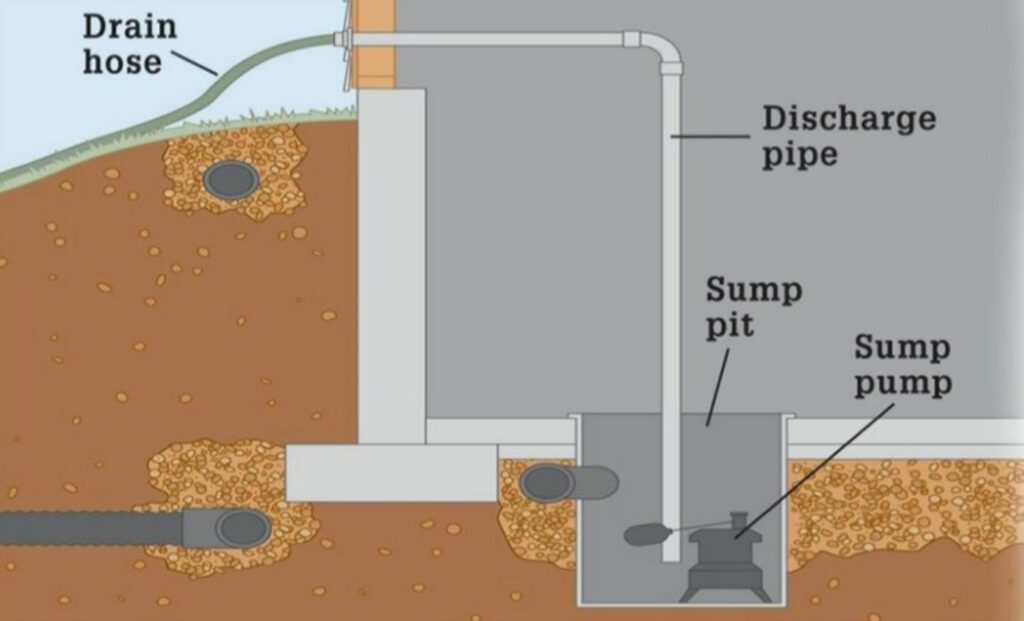
Sump Pump
The sump pump usually has cast iron housing and a very powerful motor. With their long pumping times, they can handle heavy pumping volumes that would overwhelm other pumps in their class.
The sump pump in your basement, pumps water away from your house when the water level of the sump pit rises to a certain point. This keeps your basement dry!
However, since a sump pump is just a machine, it can malfunction if it is not properly maintained or if it is at the end of its useful life. According to the US Department of Housing and Development, sump pumps have an average life expectancy of 10 years. Thus, it would be better to invest in a new sump pump.
To pump water, most home sump pumps use centrifugal pumps. An impeller, which is like a screw- or fan-like device, turns when the motor is running. Centrifugal force drives water toward the side of the pipe, creating an area of low pressure at its center. Water from the pit fills the void, and the spinning impeller pushes it out through the pipe.
For home use, you can use a sump pump powered by electricity and using standard household current, so you don’t need specialized wiring beyond a grounded outlet. To prevent accidental electrocution, a ground fault circuit interrupter (GFCI) on the outlet is a good idea since the pump is always in or near water.
Float Switch
One of the most common activation mechanisms is a floating switch. It consists of a plastic float attached to a thin shaft. The motor is turned on, and the sump pump begins to work when the water pushes the float upward.
Pump Stand
There is a pedestal on which the pump rests or sits, which prevents small objects and debris from getting stuck in the intake.
Check Valve
On the drain line, these types of valves are installed; they prevent water from flowing back into the sump pump. There is only one way for water in the drain pipe to flow through a check valve. Essentially, it keeps water from flowing back into your basement through the same drain pipe after being pumped out. They are sometimes installed in the water intake as well.
Read More about Basement Floor Drain Types and Purpose
A worn-out, dirty, or clogged check valve can fail and cause hundreds or thousands of dollars in damages. Replace or repair it as soon as possible.
Battery Backup
The battery backup powers your current sump pump. In most cases, the battery backup is located on a wall and connected to the sump pump.
Backup Sump Pump
In general, it is during heavy rains that your sump pump needs to run. This rainfall is often accompanied by other weather phenomena, such as lightning and wind. We can all picture what it will be like when your sump pump loses power due to lightning or wind. Your basement will is flooded! There will be costly damage!
What can you do to prevent this? Have a backup pump at all times. However, battery backups often fail because old batteries or batteries that have been out for so long become ineffective.
A water-powered backup sump pump is the ideal solution. With a backup sump pump, you can avoid flooding your basement if you have a reliable water source.
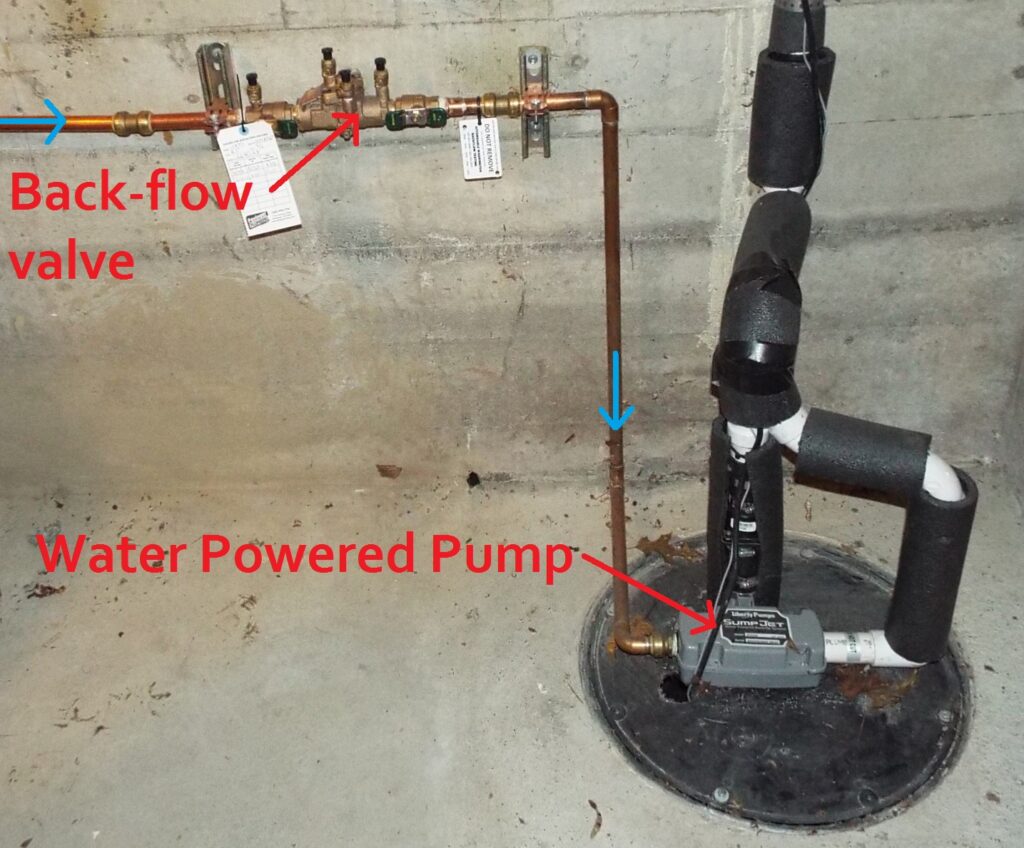
Discharge
This component funnels the water into the discharge pipe, from which it exits the sump.
The sump pump is attached to a sewer, the discharge pipe is equipped with a check valve, and it may be equipped with an anti-siphon device to prevent backflow. It is also possible to simply connect the discharge pipe to a hose that carries water sufficiently away from the house. Local building codes usually dictate the location of water discharge.
Discharge Pipe
These pathways are often constructed from PVC pipes and transport the water away from the house.
Operational Considerations
You need to know a fact. There are no basements that will not get wet! In every basement, water will seep through a small crack, even in the best-sealed basements.
Don’t try to put off what’s inevitable with all your money and time. It’s important to arrange your basement so that water will cause minimal damage to it when it does come in. Anything that you do not want to get wet should not be stored in your basement. Storing items on shelves instead of the floor is a better idea.
Numerous people seek advice on how to deal with wet basement problems. Fortunately, sump pumps offer the best solutions. Sump pits must be cleaned, sump pumps must be new or at least well-maintained, backup pumps must be powered by water, and check valves must be new or clean.
Choosing a Right Sump Pump
If your area does not require sump pumps, you may not need one. You might not benefit much from a sump pump if, for example, your basement has never had standing water and is usually warm and dry. In contrast, when you feel damp, smell musty, or notice that the area under your house floods often, you may have a moisture entry problem. Along with other waterproofing steps, sump pumps make basements healthier spaces and protect any possessions and appliances that are stored there.
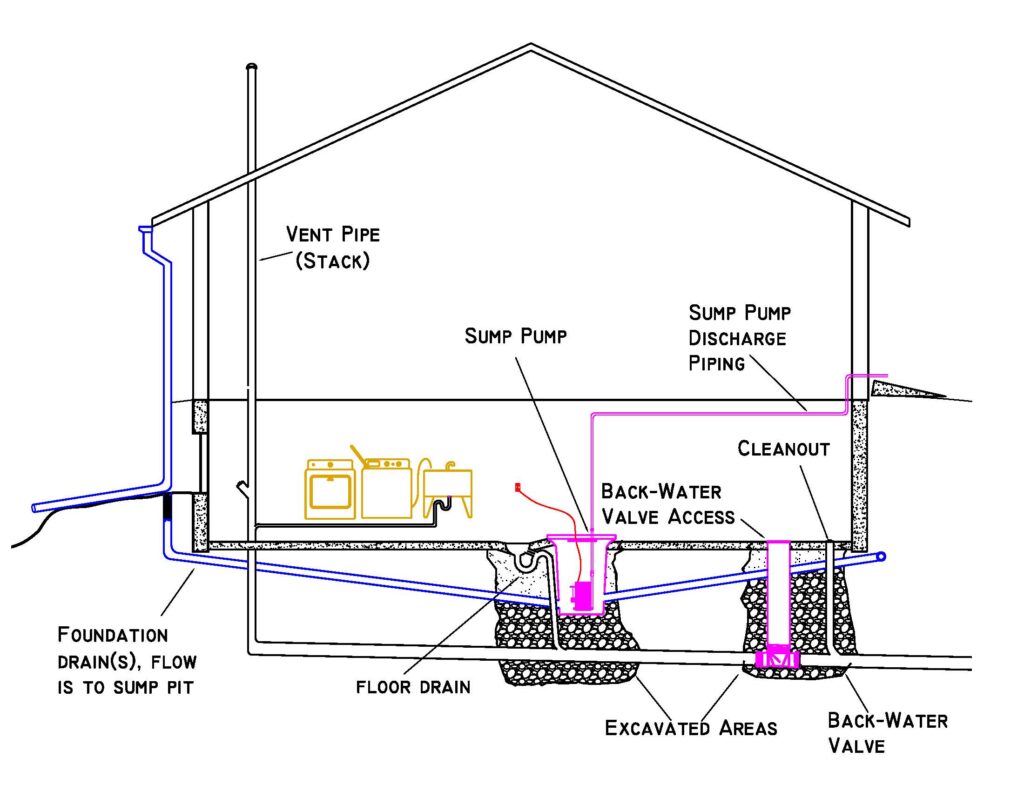
One of the easiest techniques to determine whether moisture is entering your home through your basement floor or walls is by tapping on a piece of plastic for 2 feet square (61 centimeters square) and leaving it on for a few days. You might consider doing this in multiple spots if you do not know where moisture is coming from. During the next few days, look under the plastic, if it’s wet, there is a moisture problem.
Basement moisture should first be dealt with by airing it out and running a dehumidifier. If you suspect your basement has moisture coming from the drainage around your foundation, make sure gutters and downspouts are in satisfactory condition and that water is draining away from your foundation at least 6 feet (1.8 meters). Test your plastic sheet again in a couple of weeks; if it indicates moisture, a sump pump may be necessary.
When choosing a sump pump, you need to take into account the following factors:
- Manual or automatic: Although manual sump pumps are readily available and slightly cheaper, automatic pumps are more convenient.
- Horsepower: Sump pumps typically have a horsepower range of 1/4 to 1/3. It is possible to pump more water with a more powerful motor, but if your moisture problem is minor, you don’t need to go over the top.
- Head pressure: A pump’s head pressure is its ability to raise water to a certain height. Pumps with 10 feet of head pressure, for example, are able to raise water to that height minus about 10% for physical limitations such as bends in pipes. Your pump must be able to lift water from the sump pit to the outlet pipe.
- Cord length: You need to be able to plug sump pumps directly into GFCI outlets — you shouldn’t plug them into extension cords.
- Voltage: In U.S. homes, sump pumps usually operate on a standard 110-volt circuit. There are pumps that run on 220 or 460 volts, although they are more commonly found in industrial settings.
- Backup and alarm systems: Select the backup and alarm notification system that is right for you.
What Is The Average Useful Life of A Sump Pump?
Like any other appliance or piece of equipment in your home, your sump pump will eventually wear out. It is possible that you won’t notice that your sump pump is malfunctioning until it has stopped working after an average of 10 years.
Download Parts of Sump Pump PDF
For your convenience, we have included the option to download the PDF version of this document. You can do this by clicking the link below.
Buy Equipment or Ask for a Service
By using Linquip RFQ Service, you can expect to receive quotations from various suppliers across multiple industries and regions.
Click Here to Request a Quotation From Suppliers and Service Providers
Read More on Linquip
- 10 Parts of Reciprocating Pumps + Function, Application and Working
- Parts of Water Pump
- Parts of Centrifugal Pumps
- Diaphragm Pump Parts List + Function & Application
- 7 Parts of Gear Pump and Function + Diagram & Applications
- 20 Parts of Submersible Pump + PDF
- 6 Parts of Pool Pump + Diagram & PDF
- 6 Type of Sump Pump and Which Are Better to Buy?
- How and When to Replace Your Sump Pump?
- Best Check Valve for Sump Pump: 9 of the Best Models
- What is Sump Pump and How Does It Work?
- Top Dosing Pump Manufacturers and Suppliers
- Top Water Pump Manufacturers and Suppliers
- The 7 Best RV Water Pump (Clear Guide + Review)
- The 10 Best Electric Air Pump (Clear Guide)
- The Best HVAC Vacuum Pump (Clear Guide)
- 9 Different Types of Rotary Pumps + PDF
- The 5 Best Well Pump (Clear Guide)
- The 10 Best Condensate Pumps: A Complete Guide
- 13 Parts of Concrete Pump with Name & PDF
- 5 Types of Concrete Pumps + PDF
- 7 Parts of Screw Pump: Advantages and Disadvantages
- 10 Parts of Hydraulic Pump + PDF & Function
- Parts of Oil Pump
- Types of Centrifugal Pumps: All Classification & Working Principles
- Centrifugal Pump Working Principle with Diagram

